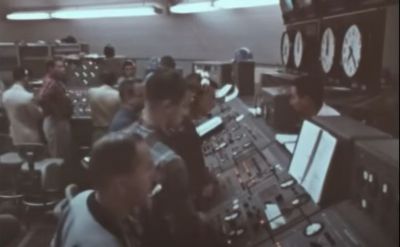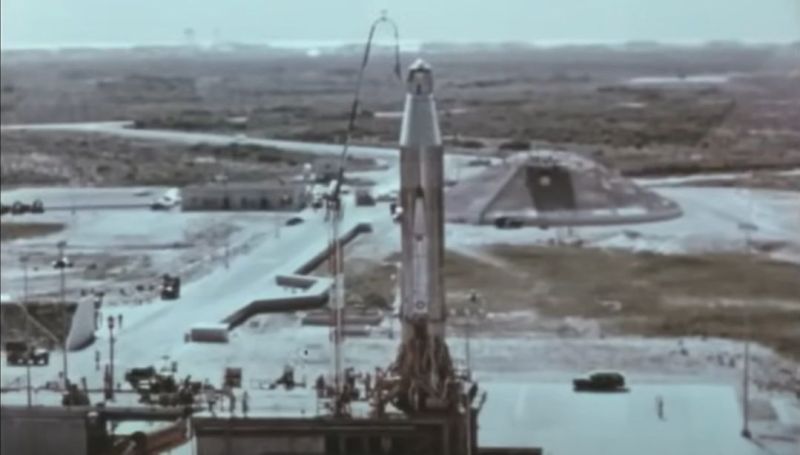
Recently the [Periscope Film] channel on YouTube published a 1960 color documentary featuring the 1958 launch of the Atlas B (SM-65B) ICBM, in its second, Missile 4B iteration. This was the second model of the second prototype, which earned the distinction of being the first truly intercontinental ballistic missile upon its successful test completion, which saw the payload plummeting into its designated part of the Atlantic Ocean. This was a much better result than the previous test of the 3B, which suffered a yaw gyro issue that caused the missile to disintegrate partway into the flight.
In this historic documentary, the Atlas B’s manufacturer – Convair – takes us through all the elements of the test range, including all the downrange stations, their functions and how all the data from the test is captured, recorded (on reel to reel tape) and integrated into one coherent data set. This includes radar data, telemetry received from the missile, as well as the data tape that the ICBM ejects from the payload section shortly before impact.
Although it’s also a promotion piece for Convair Astronautics, this does little to mar the documentary aspect, which is narrated by William Conrad, who manages to both instill a sense of technological wonder and grim foreboding against the scenery of 1950s military high-tech in the midst of a heating up Cold War.















I found it interesting to see the genesis of many NASA Apollo and Shuttle launch procedures here – the launch of an ICBM should not seem so familiar!
Well, project Mercury was in its infancy so all the developing tests and procedures were crossing over in all areas. I was two years old when this test occurred.
Not to mention that practically all Mercury guys were Air Force and the debate was still raging over whether NASA should be part of the military or a civilian institution. And the Mercury capsule simply replaced the warhead on top of a couple preexisting ICBM launch vehicles.
Considering that all manned spaceflight evolved directly out of ICBMs with a different payload and an extra burn at the top of its trajectory, it should be pretty similar.
If you want to see a Titan site in person, there is a Titan Missile Museum about 20 miles south of Tucson, AZ in the US. They offer tours of the facility and you can walk around the grounds and look at some hardware from that era. https://titanmissilemuseum.org/
It’s an interesting, if somewhat creepy experience.
Correct. Next to it is the Pima Air Musuem where an amazing crowd of aircraft can be found. Including one of the most amazing B-36 birds. Across from there is a Bone Yard.
There’s also an Atlas on display in the parking lot of an air museum in El Cajon California right next to the airport. They also have a cool VTHL aircraft inside, and a bunch of engine cutaways showing the evolution of aircraft engines.
The atlas has continued to evolve over the years and many of the technologies and lessons learned are being carried forward into the Vulcan rocket design.
The engine cutaways sound great!
As gregg4 said, the Pima Air and Space Museum in Tucson has a lot of cool stuff too. They have a
cutaway of one of the 4 row radial engines with an electric motor that turns it slowly. That is probably my favorite part of the museum. https://pimaair.org/
Yes, but even though the Atlas did find its use as one, being a liquid fueled bird caused to be sidelined in favor of a now retiring family of sold fueled ones. The Atlas started the trend of becoming a launcher not just for satellites but for capsules housing people. Of course a different one was involved in really starting the whole business off, but for big project launches the Atlas Agena was a perfect match.
That tracking radar on Antigua was moved to … um, somewhere far away, recently. Never throw anything good away, is our motto. Of course it had been modified a bit over the years, but the antenna was the same. those things are expensive, and built to last.
Ah, the voice of William Conrad.